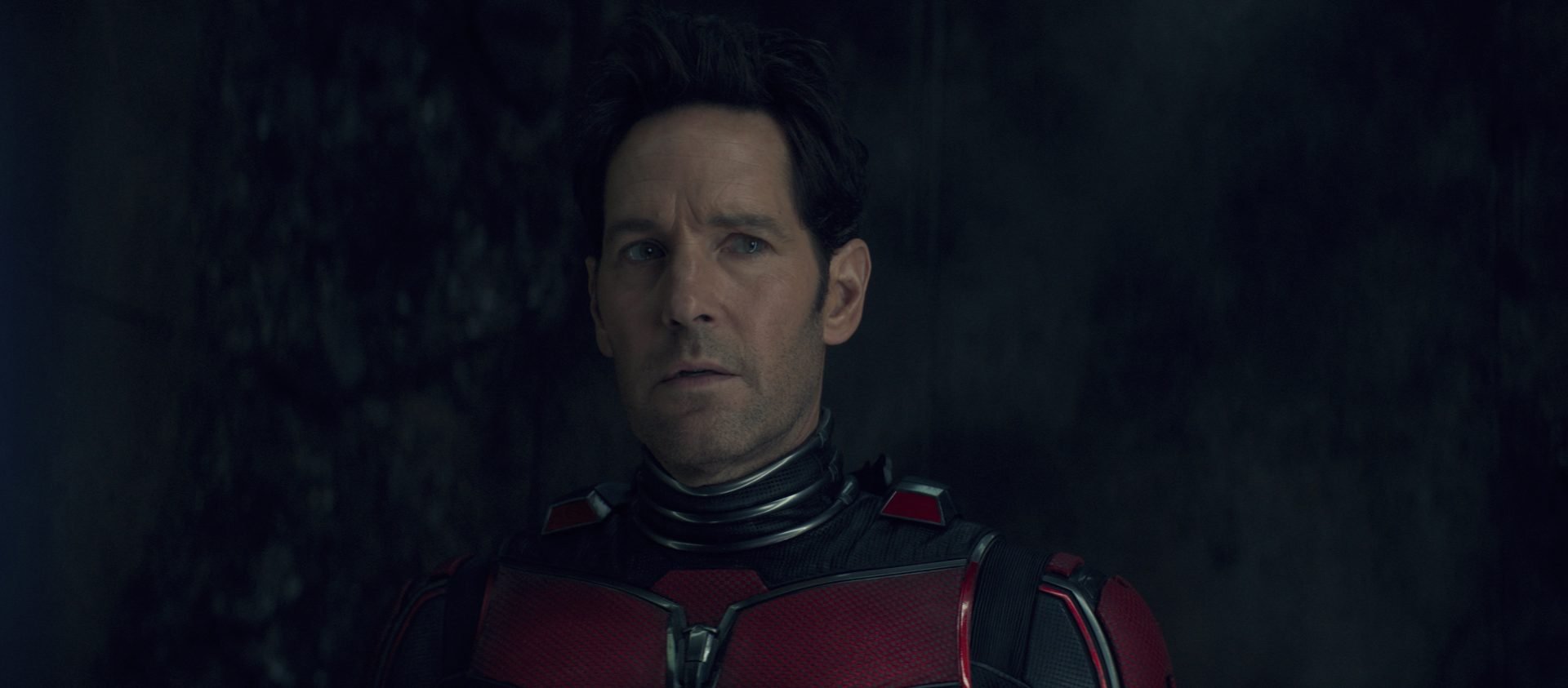Ant-Man and the Wasp: Quantumania (2023) Review: Back when Disney+ released the sequel/spinoff show to the 1988 Ron Howard film, “Willow,” it left many fans wondering what purpose the expansion of the franchise was going to serve. Furthermore, the show even seemed confused about what fanlore it was trying to please, as the world-building felt most distant from George Lucas’ vision – devoid of any consistency or inner-world logic to go with the awe. It’s the same dilemma that the MCU has been going through lately, which was reinforced more with many of its misses through phase four. However, both the studio as well as fans need to be aware of not conflating superhero fatigue with the fatigue of consistently getting prefabricated projects that translate on screen in more or less the same repetitive way.
Phase 5 of the MCU kicks start with the third Ant-Man film, which takes Earth’s tiniest hero to bigger places. After the blip, Scott Lang (Paul Rudd) is a man struggling to find a purpose in life, yet too afraid and busy to admit it while he’s on tour promoting his latest book. Scott’s daughter, Cassie (Kathryn Newton), challenges his motivations while fighting for social causes and getting detained for them.
She’s quixotic, full of energy and vigor, which motivates Scott to contemplate his role in the post-Thanos universe. But there are other grave threats he’s oblivious of, as Janet (Michelle Pfeiffer), after having been rescued from decades stuck in the Quantum Realm, is harboring deep secrets about what really went down there. Before things start making sense (to us or the characters on screen), the whole family is transported to the Quantum Realm, where most of the film unravels.
The whole conceit of introducing the twisted motivations for MCU’s next big villain through a film focused on its closest-to-human character makes for an interesting premise. After all, the whimsical quality of the previous two Ant-man films sprouts out of such interesting visual and thematic dichotomies in the first place. Think about that extraordinarily well-executed shrunken-down showdown with Yellowjacket around the toy train in Cassie’s bedroom.
The biggest disappointment of Peyton Reed’s third film then is in its inability to drive any mileage out of the scale of things around its titular protagonist. By taking the characters off our planet, the movie pays no heed in helping us get a palpable understanding of the spatial setting or the size of characters on screen in relation to the unfolding of events. In a universe where absurd transformations are no longer enough to jolt the audience with amazement, how do you expect a film that turns so outward towards its own world to deliver upon its sheer scale?

The backdrop of Quantum Realm should’ve provided enough for the MCU to embrace the wide avenue of opportunities and promises the new phase brings. But most of it is watered down in a desperate attempt and desire to turn everything into a parody – one that relentlessly asks you not to lose attention while reaffirming the giddiness that came before. Only this time around, it feels devoid of any vigor or heart.
We get some rebel tribes, scraping smugglers, queasy alliances, walking buildings and spaceships, and one clunky attempt at recreating the cantina scene from Star Wars. There are a few semi-ingenious set pieces, most of which were already ruined in the film’s trailer. However, they all feel like lesser accomplished versions of things we’ve seen before. Thus, it feels like a universe we’ve been to before – one we’ve seen appear in many other similarly corporate-dictated and committee-created IPs. It’s exhausting.
The biggest hook for fans ever since the finale of “Loki” remained the anticipated big-screen introduction of Jonathan Majors’s timeline-controlling and world-vanquishing Kang The Conqueror. The script does a good job at setting up that intrigue, as we’re told that he’s a nearly omnipotent menace who needs to be prevented from ever escaping the Quantum Realm. The promise of the film serving as a path-defining introduction to this seismic character, however, comes as a red herring.
The humor does take a necessary backseat whenever Majors is on screen, but only so he can mark his threatening presence by levitating people and shooting lasers out of his hands. It’s the same disinterest with which the film chooses to explore the life of the people in the Quantum Realm. How do you market your film as a grand introduction to the next big baddie when you treat him with the same peripheral dexterity?
Unlike the previous two films in the franchise, “Ant-Man and the Wasp: Quantumania” fails at driving mileage out of the scale of things around its central characters. It lacks the consistency and the giddy wonder of the films that acted as necessary anchors to ground the MCU into the playful territory. To make up for it, it even submerges the emotional conceit of the film underneath half-baked character motivations. Even by the MCU standards, it takes great ineptitude to render Michael Douglas and Bill Murray into lifeless on-screen characters.



![Adam [2019]: ‘IFFI’ Review – An Admirable Film about Living Within the Social Fringes](https://79468c92.delivery.rocketcdn.me/wp-content/uploads/2019/11/Adam_pic-2-768x431.jpg)
![Amodini [1994] MUBI Review: Visual Elegance complimented by Scathing Social Commentary](https://79468c92.delivery.rocketcdn.me/wp-content/uploads/2020/10/Amodini-highonfilms-768x413.png)

![In the Mouth of Madness [1994]: Twisted. Trippy. Terrifying.](https://79468c92.delivery.rocketcdn.me/wp-content/uploads/2018/07/in-the-mouth-of-madness-screenshot-3-768x322.png)